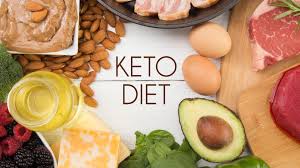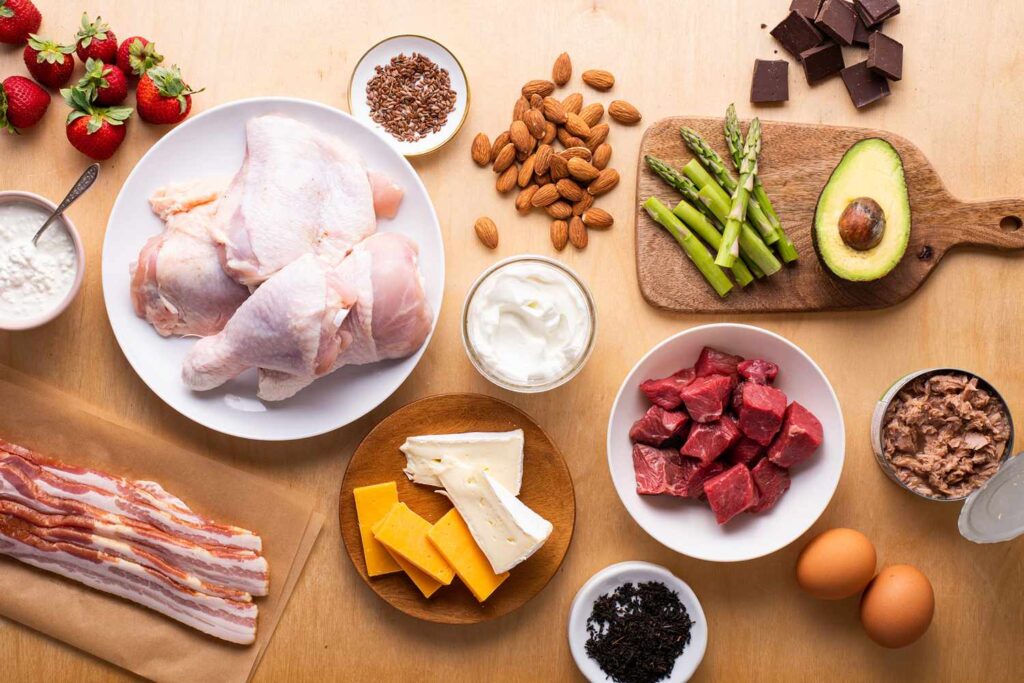The Ketogenic Diet, often referred to as “Keto,” has taken the health and wellness world by storm in recent years. This high-fat, low-carbohydrate approach has gained recognition for its ability to help people lose weight, improve energy levels, and potentially address various health concerns. At its core, the ketogenic diet works by transitioning the body into a state called ketosis, where it primarily burns fat for energy instead of carbohydrates.
In this expanded review, we’ll dive deeper into the Ketogenic Diet 101 guide, an essential resource for anyone considering or already pursuing the keto lifestyle. With its clear explanations, practical meal plans, and helpful tips, this guide serves as a roadmap for thriving on a high-fat, low-carb diet.
Understanding the Basics: What is the Ketogenic Diet?
The Ketogenic Diet 101 guide excels at breaking down the fundamental principles of the diet into a digestible format. It introduces readers to the primary macronutrient ratios needed to achieve and sustain ketosis. The diet typically emphasizes:
- High Fat Intake: About 70-80% of daily calories come from healthy fats.
- Moderate Protein: Protein accounts for around 10-20% of calories.
- Low Carbohydrates: Carbs are limited to approximately 5-10% of total intake.
By focusing on reducing carbohydrate consumption to a bare minimum, the body is forced to shift its energy source from glucose (derived from carbs) to stored fat. This metabolic switch produces molecules called ketones, which serve as a clean, efficient fuel for the brain and body.
The Science Behind Ketosis: How Does it Work?
One of the most engaging aspects of the guide is its explanation of the science behind ketosis. Under normal circumstances, the body relies on glucose from carbohydrates for energy. When carbohydrate intake is restricted, the body depletes its glycogen stores and begins to break down fat into ketones for energy. This metabolic state not only promotes fat loss but also delivers other potential health benefits, including:
- Enhanced Mental Clarity: Ketones are a more stable energy source for the brain, reducing brain fog.
- Reduced Inflammation: The diet has been associated with anti-inflammatory effects, which may benefit overall health.
- Improved Blood Sugar Levels: By reducing carb intake, the ketogenic diet can help stabilize blood sugar and improve insulin sensitivity.
The guide further explores how these benefits extend to various conditions such as type 2 diabetes, epilepsy, and even some neurological diseases like Alzheimer’s.
Meal Planning Made Simple
A standout feature of the Ketogenic Diet 101 guide is its practical approach to meal planning. It provides readers with clear guidelines on what to eat and what to avoid, taking the guesswork out of starting the diet. Key recommendations include:
- Keto-Friendly Foods: Healthy fats (avocados, olive oil, nuts), moderate protein (meat, fish, eggs), and low-carb vegetables (spinach, broccoli, zucchini).
- Foods to Avoid: Sugary snacks, grains, starchy vegetables, and processed foods.
Additionally, the guide includes a comprehensive shopping list of keto staples, ensuring readers can stock their pantries with ease. This emphasis on practicality makes the diet more approachable for beginners and helps them transition smoothly.
Navigating Potential Challenges
Switching to a ketogenic diet can come with its own set of challenges, particularly during the initial phase. The guide doesn’t shy away from discussing the potential side effects, often referred to as the “keto flu.” Symptoms like headaches, fatigue, and sleep disturbances are common as the body adapts to burning fat for fuel. Fortunately, the guide provides actionable tips to alleviate these symptoms, such as:
- Staying hydrated and replenishing electrolytes.
- Gradually reducing carbohydrate intake instead of making drastic cuts.
- Ensuring sufficient fat consumption to meet energy needs.
By addressing these hurdles head-on, the guide helps readers stay motivated and committed to their goals.
Delicious and Easy-to-Follow Recipes
One of the most appealing sections of the Ketogenic Diet 101 guide is its collection of keto-friendly recipes. These recipes are designed to cater to a variety of tastes and dietary preferences while staying within the required macronutrient ratios. Examples include:
- Breakfast: Fluffy keto pancakes made with almond flour and topped with sugar-free syrup.
- Lunch: A hearty avocado chicken salad with olive oil dressing.
- Dinner: Garlic butter steak paired with roasted Brussels sprouts.
- Desserts and Snacks: Chocolate fat bombs and keto cheesecakes.
Each recipe includes detailed nutritional information, making it easier for readers to track their macros and stay on target.
Health Benefits: More Than Just Weight Loss
While weight loss is often the primary motivation for adopting the ketogenic diet, the guide emphasizes that the benefits extend far beyond shedding pounds. Some of the noteworthy health advantages include:
- Blood Sugar Control: The keto diet has been shown to improve glycemic control, particularly for individuals with type 2 diabetes.
- Neurological Support: Originally developed to manage epilepsy, the diet continues to show promise for other brain-related conditions.
- Heart Health: By focusing on healthy fats, the diet may support improved cholesterol levels and cardiovascular health.
The guide also highlights emerging research on the potential anti-cancer properties of ketosis and its role in promoting longevity.
Tips for Long-Term Success
Sticking to a ketogenic diet requires commitment and planning, and the Ketogenic Diet 101 guide offers a wealth of practical tips to ensure long-term success. Key advice includes:
- Tracking Macros: Using apps or food journals to monitor fat, protein, and carb intake.
- Meal Prepping: Preparing meals in advance to avoid unhealthy temptations.
- Social Strategies: Navigating gatherings and restaurant menus while staying keto-compliant.
These tips are invaluable for those who may struggle with consistency or find it difficult to maintain the diet in social settings.
Conclusion: A Worthwhile Investment in Your Health
The Ketogenic Diet 101 guide is an excellent starting point for anyone interested in exploring the high-fat, low-carb lifestyle. With its thorough explanations, actionable advice, and creative recipes, the guide equips readers with everything they need to succeed on the ketogenic diet. Whether your goal is to lose weight, improve mental clarity, or address specific health concerns, this guide offers the tools and insights to help you thrive.
By embracing the ketogenic diet, you’re not just embarking on a diet but making a lasting investment in your health and well-being.






